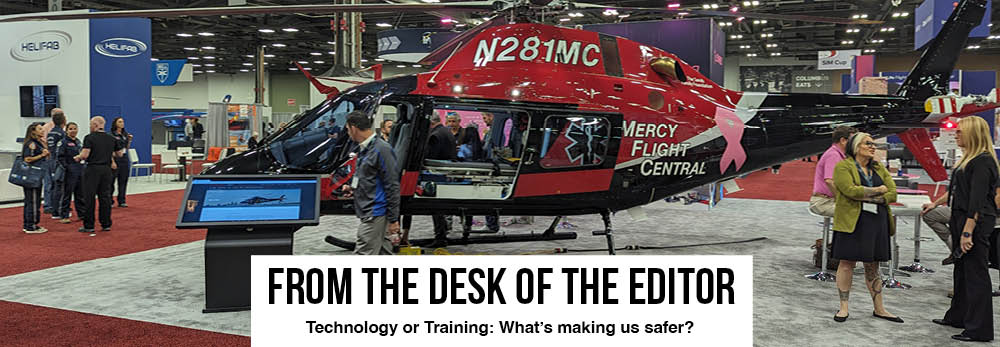|
Nov
06
2023
|
|
Posted 2 years 54 days ago ago by Admin
|
|

I recall that when I was an emergency medical services pilot back in the 90s, I wrote many times that it was my belief that training was the key to reducing the high accident rate in EMS. Although I flew an S-76 with an autopilot and glass cockpit, technology was not as prevalent for light-single helicopters.
For the most part back then, we received our initial part 135 training, then our annual recurrent training (which was pretty light) only once per year. For most operators, training involved shooting an instrument approach and performing an unusual attitude recovery under a view limiting device (foggles) during VMC conditions. Given the lack of technology, as compared to today, it’s difficult to fault the operators. I always used to say that if the operators could not train themselves to be safer, they would eventually be regulated and “technologied” into safety.
In a recent presentation, I saw data from the USHST that showed through the first nine months of the fiscal year beginning Oct. 1, 2023, the accident rate for fatal and non-fatal accidents was 34% lower than during the same period in FY2022, and 26% LOWER than the five-year average for the same period.
If I am being honest, I feel like this stat kind of snuck up on me. For sure, helicopter operators have been regulated into safer operational processes in addition to required technology in the cockpit.
In the last decade, aside from improved regulations, we have seen technology in helicopter advance very rapidly. Think about it: we have seen useful advances in mobile devices, night vision devices, risk assessment processes, powerful weather reporting tools, in-cockpit radar, HTAWS, synthetic vision, and autopilots and simulators for light helicopters.
I reached out to six individuals in our industry who are very active on safety topics and initiatives and asked them, “Technology or training – what’s making us safer? Can you place a percentage on each?” Of course, without hard data, the answers are all anecdotal and coming from “the gut,” as many of them said. Answers among the group were very narrow and only ranged from 70% training / 30% tech to 50/50.
One of the respondents made the following observation, “Operators who have fielded tech the right way have likely enhanced operational efficiency and safety performance. However, failure to provide initial and recurrent training to go with the new technology can turn a tech advantage into a liability.” This theme was common among the group of respondents.
Another respondent made a great point when he indicated, “Intuitively, I think technology – i.e. affordable light autopilots and synthetic vision technology – must have had an effect on bringing down the accident rate. The reason I think this is because the majority of accidents over the years since the FAA and NTSB have been investigating accidents had, at least at some point, an element of loss of situational awareness. So, having an autopilot to keep the machine upright and synthetic technology to keep the pilot situationally aware of their surroundings must have played a significant part.”
Overall, I think three things have drastically improved in the last five years: training, technology, and safety culture. How much each one is actually impacting our safety improvements will continue to be of great debate...so stay tuned...because this debate is coming.
READ MORE ROTOR PRO: https://justhelicopters.com/Magazine
WATCH ROTOR PRO YOUTUBE CHANNEL: https://buff.ly/3Md0T3y
You can also find us on
Instagram - https://www.instagram.com/rotorpro1
Facebook - https://www.facebook.com/rotorpro1
Twitter - https://twitter.com/justhelicopters
LinkedIn - https://www.linkedin.com/company/rotorpro1